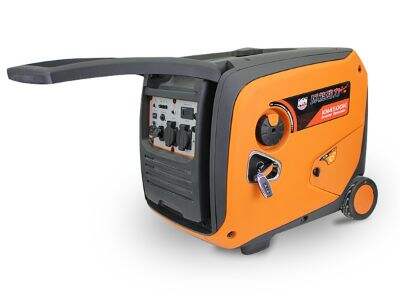You could be well aware of how big high-pressure cleaners are dents, and they can be used to clean dozens of things from cars to sidewalks to buildings. These machines operate by forcing water at high pressure, in a spray or stream, to remove dirt, grime, and other messes that can accumulate on surfaces. High pressure cleaners, as the name suggests, are high-pressure cleaning machines, and one of them is the ability to change or adjust the pressure for different cleaning jobs to make them more effective. In this article, we will discuss that why adjust the pressure as per the surface you are cleaning and how to do it stepwise.
Why Is the Pressure Adjustment Important?
You are recommended to modify the pressure level in a high pressure cleaner as its a very crucial factor as you need different pressure levels to perform different cleaning tasks effectively. For example, if you are cleaning a car, it is a delicate surface, it needs less pressure or else you are going to damage the paint or the surface. But, however, when you are cleaning hard surface, e.g., a concrete sidewalk, you can generally apply more pressure as it is hard and can take it. If you apply excessive pressure on a sensitive material, it can cause damage to these surfaces and can further worsen the look of these surfaces. On the flip side, you're not using enough pressure on a hard surface and it may not get clean at all. That is also why it is very important that you adapt the pressure of your high pressure cleaner to the assignment you are working on, for the best results.
Hi-Pressure Cleaner — How to change the pressure
The first step is to find the pressure adjustment knob or dial on your high pressure cleaner. You can typically spot it at the end of the hose, where the water sprays out.
Set the pressure to the lowest, to start with. This is perhaps a safe point to begin.
Then for, high pressure cleaner ON USE and test pressure on a small area back side of item you clean. That way, you can see if the pressure is sufficient to get the job done without harming any surfaces.
If the pressure is too low and it does not clean well, gradually increase it until you find the appropriate level for the cleaning work you are performing.
If the pressure seems too much, and you’re worried that it might damage the surface, turn it down slowly until it feels just right for the job at hand.
Finding the Right Pressure: Tips for Success
With that in mind, it is best to start on the lowest pressure setting and work your way up until you find the right pressure for the task at hand.
Always remember what kind of surface you are cleaning. Delicate surfaces, such as cars, require a lower pressure setting than tougher surfaces, like concrete or brick.
If unsure of the correct pressure, then always try the pressure on an inconspicuous spot first. This way you will not make any mistakes as you should start cleaning the entire surface.
As a rule and a min/max tell you, always start with the low-pressure setting.
Common Mistakes to Avoid:
A common error is applying too much pressure on the soft surface, potentially scratching or damaging it. Having said that, it is better to be cautious.
One more mistake is starting the cleaning job without testing the pressure. This could result in poor cleaning and dirt might have like left.
Beginning too high pressure can likewise backfire, damaging the surface and worsening instead of improving things.
Finally, some people do their cleaning without adjusting the pressure adjustment dial and using a similar amount of pressure for every cleaning job. Every job is uniquely and it is prudent to do a ISG.
How to get the best results with your cleaning:
So, by using the pressure adjustment with your high pressure cleaner, you can set each job to give it the best clean possible. Remember, if you are cleaning a delicate surface like a car, you will likely have to set the washer to a lower pressure to avoid damaging the surface. On more resilient surfaces such as pavements or driveways you can apply harder pressure until you find the optimal level of cleaning. Having different pressure settings for what you are cleaning means you can make sure your high pressure cleaner is being used as effectively as possible and doing its job right.
In Conclusion:
So, that is how a high pressure cleaner pressure adjustment helps you obtain the best cleaning for all of your cleaning activities. Additionally, a high pressure cleaner promotes responsible cleaning behaviour which goes a long way in reducing environmental impacts. So the next time you have something to clean, don’t forget to change the pressure level on your high pressure cleaner so that you can get the best results!


